US Airways 2008 Annual Report Download - page 13
Download and view the complete annual report
Please find page 13 of the 2008 US Airways annual report below. You can navigate through the pages in the report by either clicking on the pages listed below, or by using the keyword search tool below to find specific information within the annual report.-
 1
1 -
 2
2 -
 3
3 -
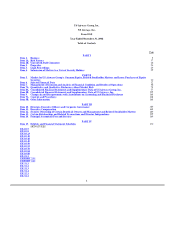 4
4 -
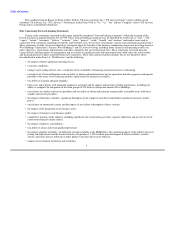 5
5 -
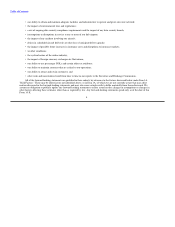 6
6 -
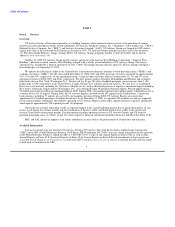 7
7 -
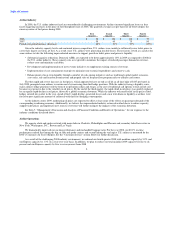 8
8 -
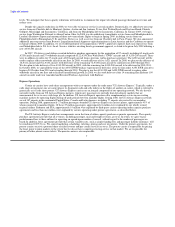 9
9 -
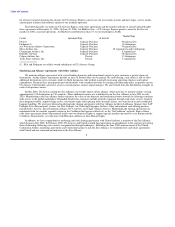 10
10 -
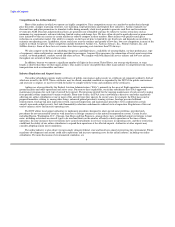 11
11 -
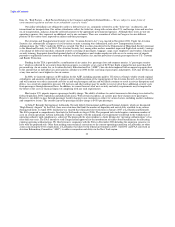 12
12 -
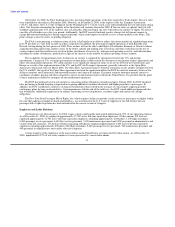 13
13 -
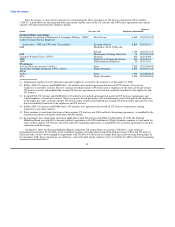 14
14 -
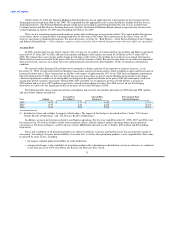 15
15 -
 16
16 -
 17
17 -
 18
18 -
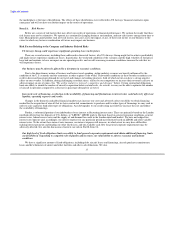 19
19 -
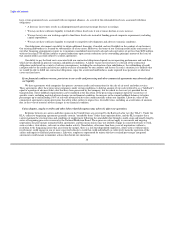 20
20 -
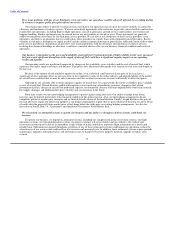 21
21 -
 22
22 -
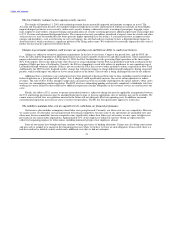 23
23 -
 24
24 -
 25
25 -
 26
26 -
 27
27 -
 28
28 -
 29
29 -
 30
30 -
 31
31 -
 32
32 -
 33
33 -
 34
34 -
 35
35 -
 36
36 -
 37
37 -
 38
38 -
 39
39 -
 40
40 -
 41
41 -
 42
42 -
 43
43 -
 44
44 -
 45
45 -
 46
46 -
 47
47 -
 48
48 -
 49
49 -
 50
50 -
 51
51 -
 52
52 -
 53
53 -
 54
54 -
 55
55 -
 56
56 -
 57
57 -
 58
58 -
 59
59 -
 60
60 -
 61
61 -
 62
62 -
 63
63 -
 64
64 -
 65
65 -
 66
66 -
 67
67 -
 68
68 -
 69
69 -
 70
70 -
 71
71 -
 72
72 -
 73
73 -
 74
74 -
 75
75 -
 76
76 -
 77
77 -
 78
78 -
 79
79 -
 80
80 -
 81
81 -
 82
82 -
 83
83 -
 84
84 -
 85
85 -
 86
86 -
 87
87 -
 88
88 -
 89
89 -
 90
90 -
 91
91 -
 92
92 -
 93
93 -
 94
94 -
 95
95 -
 96
96 -
 97
97 -
 98
98 -
 99
99 -
 100
100 -
 101
101 -
 102
102 -
 103
103 -
 104
104 -
 105
105 -
 106
106 -
 107
107 -
 108
108 -
 109
109 -
 110
110 -
 111
111 -
 112
112 -
 113
113 -
 114
114 -
 115
115 -
 116
116 -
 117
117 -
 118
118 -
 119
119 -
 120
120 -
 121
121 -
 122
122 -
 123
123 -
 124
124 -
 125
125 -
 126
126 -
 127
127 -
 128
128 -
 129
129 -
 130
130 -
 131
131 -
 132
132 -
 133
133 -
 134
134 -
 135
135 -
 136
136 -
 137
137 -
 138
138 -
 139
139 -
 140
140 -
 141
141 -
 142
142 -
 143
143 -
 144
144 -
 145
145 -
 146
146 -
 147
147 -
 148
148 -
 149
149 -
 150
150 -
 151
151 -
 152
152 -
 153
153 -
 154
154 -
 155
155 -
 156
156 -
 157
157 -
 158
158 -
 159
159 -
 160
160 -
 161
161 -
 162
162 -
 163
163 -
 164
164 -
 165
165 -
 166
166 -
 167
167 -
 168
168 -
 169
169 -
 170
170 -
 171
171 -
 172
172 -
 173
173 -
 174
174 -
 175
175 -
 176
176 -
 177
177 -
 178
178 -
 179
179 -
 180
180 -
 181
181 -
 182
182 -
 183
183 -
 184
184 -
 185
185 -
 186
186 -
 187
187 -
 188
188 -
 189
189 -
 190
190 -
 191
191 -
 192
192 -
 193
193 -
 194
194 -
 195
195 -
 196
196 -
 197
197 -
 198
198 -
 199
199 -
 200
200 -
 201
201 -
 202
202 -
 203
203 -
 204
204 -
 205
205 -
 206
206 -
 207
207 -
 208
208 -
 209
209 -
 210
210 -
 211
211 -
 212
212 -
 213
213 -
 214
214 -
 215
215 -
 216
216 -
 217
217 -
 218
218 -
 219
219 -
 220
220 -
 221
221 -
 222
222 -
 223
223 -
 224
224 -
 225
225 -
 226
226 -
 227
227 -
 228
228 -
 229
229 -
 230
230 -
 231
231 -
 232
232 -
 233
233 -
 234
234 -
 235
235 -
 236
236 -
 237
237 -
 238
238 -
 239
239 -
 240
240 -
 241
241 -
 242
242 -
 243
243 -
 244
244 -
 245
245 -
 246
246 -
 247
247 -
 248
248 -
 249
249 -
 250
250 -
 251
251 -
 252
252 -
 253
253 -
 254
254 -
 255
255 -
 256
256 -
 257
257 -
 258
258 -
 259
259 -
 260
260 -
 261
261 -
 262
262 -
 263
263 -
 264
264 -
 265
265 -
 266
266 -
 267
267 -
 268
268 -
 269
269 -
 270
270 -
 271
271 -
 272
272 -
 273
273 -
 274
274 -
 275
275 -
 276
276 -
 277
277 -
 278
278 -
 279
279 -
 280
280 -
 281
281 -
 282
282 -
 283
283 -
 284
284 -
 285
285 -
 286
286 -
 287
287 -
 288
288 -
 289
289 -
 290
290 -
 291
291 -
 292
292 -
 293
293 -
 294
294 -
 295
295 -
 296
296 -
 297
297 -
 298
298 -
 299
299 -
 300
300 -
 301
301 -
 302
302 -
 303
303 -
 304
304 -
 305
305 -
 306
306 -
 307
307 -
 308
308 -
 309
309 -
 310
310 -
 311
311 -
 312
312 -
 313
313 -
 314
314 -
 315
315 -
 316
316 -
 317
317 -
 318
318 -
 319
319 -
 320
320 -
 321
321 -
 322
322 -
 323
323 -
 324
324 -
 325
325 -
 326
326 -
 327
327 -
 328
328 -
 329
329 -
 330
330 -
 331
331 -
 332
332 -
 333
333 -
 334
334 -
 335
335 -
 336
336 -
 337
337 -
 338
338 -
 339
339 -
 340
340 -
 341
341 -
 342
342 -
 343
343 -
 344
344 -
 345
345 -
 346
346 -
 347
347 -
 348
348 -
 349
349 -
 350
350 -
 351
351 -
 352
352 -
 353
353 -
 354
354 -
 355
355 -
 356
356 -
 357
357 -
 358
358 -
 359
359 -
 360
360 -
 361
361 -
 362
362 -
 363
363 -
 364
364 -
 365
365 -
 366
366 -
 367
367 -
 368
368 -
 369
369 -
 370
370 -
 371
371 -
 372
372 -
 373
373 -
 374
374 -
 375
375 -
 376
376 -
 377
377 -
 378
378 -
 379
379 -
 380
380 -
 381
381 -
 382
382 -
 383
383 -
 384
384 -
 385
385 -
 386
386 -
 387
387 -
 388
388 -
 389
389 -
 390
390 -
 391
391 -
 392
392 -
 393
393 -
 394
394 -
 395
395 -
 396
396 -
 397
397 -
 398
398 -
 399
399 -
 400
400 -
 401
401
 |
 |

Table of Contents
On October 10, 2008, the FAA finalized new rules governing flight operations at the three major New York airports. The new rules
were scheduled to take effect in December 2008. However, on December 8, 2008, at the request of the Air Transport Association
("ATA") and others, the U.S. Court of Appeals for the Washington D.C. Circuit issued a stay order prohibiting the new rules from taking
effect. The litigation surrounding the legality of the final rules will continue forward in 2009. If the new rules are upheld, the FAA will
withdraw approximately 15% of the industry slots at LaGuardia. If deemed legal, the rules will reduce the number of flights US Airways
can offer at LaGuardia over a five year period. Additionally, the DOT recently finalized a policy change that will permit airports to
charge differentiated landing fees during congested periods, which could impact our ability to serve certain markets in the future. This
policy change is also the source of pending litigation.
The FAA is now pursuing a voluntary return of slots at LaGuardia in an effort to reduce the current number of scheduled operations
from 75 per hour to 71 per hour in order to reduce congestion. In addition, the government capped operations at both Kennedy and
Newark starting during the first quarter of 2008. Thus, airlines will not be able to add flights at LaGuardia, Kennedy or Newark without
acquiring operating rights from another carrier. In the future, takeoff and landing time restrictions and other restrictions on the use of
various airports and their facilities may result in further curtailment of services by, and increased operating costs for, individual airlines,
including our airline subsidiaries, particularly in light of the increase in the number of airlines operating at these airports.
The availability of international routes to domestic air carriers is regulated by agreements between the U.S. and foreign
governments. Changes in U.S. or foreign government aviation policy could result in the alteration or termination of these agreements and
affect our international operations. We could continue to see significant changes in terms of air service between the United States and
Europe as a result of the implementation of the U.S. and the EU Air Transport Agreement, generally referred to as the Open Skies
Agreement, which took effect in March 2008. The Open Skies Agreement removes bilateral restrictions on the number of flights between
the U.S. and EU. One result of the Open Skies Agreement has been the application before the DOT for antitrust immunity between Star
Alliance members and Continental, and oneworld members and American Airlines. If granted, antitrust immunity permits carriers to
coordinate schedules, pricing and other competitive aspects on international routes to/from the United States. It is possible that the grant
of these immunities could have an impact on our international operations.
The DOT has proposed several new initiatives concerning airline obligations toward passengers. During 2008, the DOT finalized
rules pertaining to denied boarding compensation requiring additional consumer disclosure and higher payments to passengers. In
addition, the DOT established a task force on long on-board delays that resulted in the issuance of a final report suggesting model
contingency plans for long on-board delays. Contemporaneous with the end of the task force, the DOT issued additional proposed rules
that would place additional requirements on airlines concerning service irregularities, consumer rights and contract of carriage
obligations.
The New York State Passenger Bill of Rights law, which requires airlines to provide certain services to passengers on flights within
the state that undergo extended on-board ground delays, was overturned in the U.S. Court of Appeals for the 2nd Circuit, but new
passenger bill of rights legislation has been introduced in the current session of Congress.
Employees and Labor Relations
Our businesses are labor intensive. In 2008, wages, salaries and benefits represented approximately 18% of our operating expenses.
As of December 31, 2008, we employed approximately 37,500 active full-time equivalent employees. Of this amount, US Airways
employed approximately 32,700 active full-time equivalent employees including approximately 4,200 pilots, 7,100 flight attendants,
6,800 passenger service personnel, 6,600 fleet service personnel, 3,100 maintenance personnel and 4,900 personnel in administrative and
various other job categories. US Airways Group's remaining subsidiaries employed approximately 4,800 active full-time equivalent
employees including approximately 800 pilots, 500 flight attendants, 2,600 passenger service personnel, 500 maintenance personnel and
400 personnel in administrative and various other job categories.
A large majority of the employees of the major airlines in the United States are represented by labor unions. As of December 31,
2008, approximately 87% of our active employees were represented by various labor unions.
11
